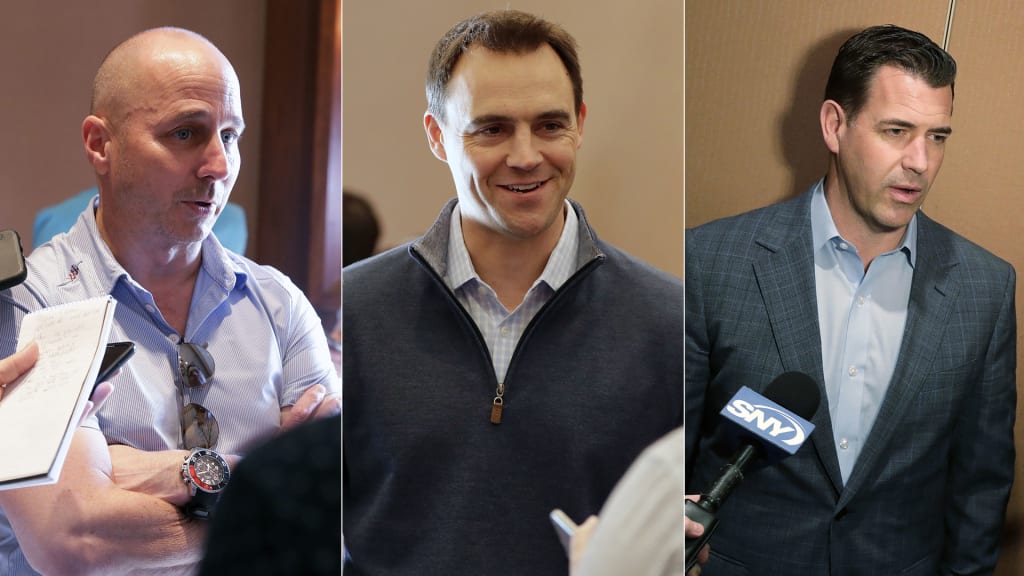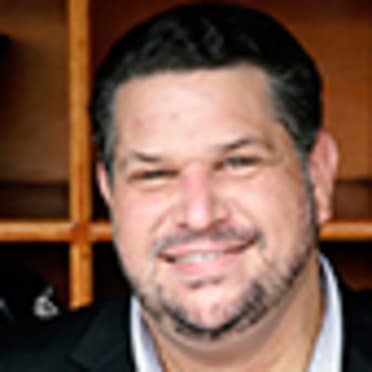
SCOTTSDALE, Ariz. – General managers are operating under some new rules, which should result in changes when it comes to their approach to roster construction.
The two biggest changes involve the addition of a 26th roster spot and a new rule requiring pitchers to face a minimum of three batters.
How will executives around the league adapt to the new rules being put in place for 2020? We posed that question to a number of them at this week’s General Managers Meetings.
Regarding the 26th roster spot, it would be logical to assume that each club will utilize it differently based on their personnel.
“It’s going to be fun to watch because different teams will approach it very differently,” Phillies GM Matt Klentak said. “You may have some rebuilding-type teams that are going to use that as an opportunity to give an unproven player more playing time. For contending teams, you might find that they’re using that roster spot on some sort of specialist; not a pitcher, but whether it’s a pinch-runner, a pinch-hitter or a defensive specialist, someone who gives them an advantage in a very targeted area.”
Other executives echoed Klentak’s latter thought, noting that pinch-runners or slick-fielding -- and light-hitting -- position players might be able to find a more secure role with a team for an entire season rather than simply when rosters expand on Sept. 1.
“Maybe we were wary of carrying just the runner or just the defender because we needed the functionality of the 25th spot,” Twins GM Thad Levine said. “I think we’re a lot more open-minded with the 26th spot to maybe go back to those types of skill sets.”
The addition of another roster spot could have another significant impact, as the extra player will enable teams to rest their guys more throughout the season. Given that teams will be limited to carrying 13 active pitchers -- a number many clubs were already using with a 25-man roster -- the additional spot will go to a position player in the vast majority of instances.
“The biggest factor that I can see is that it’s going to help with player health,” Blue Jays GM Ross Atkins said. “You’ll be able to rest guys, put them in situations in which they’re less exposed because of the added depth.”
“With the travel demands that these guys have, it’s important that you can cycle through guys,” Indians GM Mike Chernoff said. “It gives you more flexibility, but I don’t know exactly how it’s going to play out and if teams are going to do crazy things with that spot to try to take advantage of it.”
Could the addition of a 26th roster spot make an impact on this year’s free-agent market? While some teams will utilize that spot to give young players a shot, others could add a veteran bat to lengthen their bench.
“One more regular-season job times 30 means more jobs,” Mets GM Brodie Van Wagenen said. “It will create greater opportunity for the first five months of the season for players to get big league service.”
While the 26th man will allow teams to alter the way they deploy their roster, the new rule requiring pitchers to face a minimum of three batters will have a bigger impact on the strategy managers utilize with their bullpens.
Left-handed specialists including Adam Kolarek (.483 OPS vs. LHH/.857 OPS vs. RHH in 2019), Jerry Blevins (.540/.831) and Oliver Pérez (.607/.889), not to mention the rare righty specialists such as Adam Cimber (.645 OPS vs RHH/.943 OPS vs LHH) and Brad Brach (.575/1.139) could find themselves less appealing to teams given the new rule.
The only exceptions to the three-batter rule will be injury, illness or the completion of the half-inning, so unless a pitcher comes in for the final one or two outs in an inning and completes it, he’ll be required to face at least three hitters, even if the opposing team opts to pinch-hit for a more advantageous matchup.
“I would think it’s going to force people to be a little more concerning about the one-handedness,” Yankees GM Brian Cashman said. “If somebody is really bad at one side and gets exposed from that side of the plate, that’s going to give people some pause.”
Lefty relievers such as Andrew Chafin, who had a relatively even lefty-righty OPS split of .676/.713, could become more attractive to teams in search of lefty-neutralizing pitchers. Among this year’s free-agent lefty relievers, Jake Diekman (.656 OPS vs. LHH/.675 OPS vs. RHH) and Tony Sipp (.666/.609) had platoon-friendly splits in 2019.
But as Atkins noted, some teams -- including the Blue Jays -- have already been taking that approach in recent years, so the impact could be less severe than some believe.
“We haven’t deployed specialists as much,” Atkins said. “We like guys who can get multiple outs and have tried to put guys in our bullpen who do just that.”
The effect of the three-batter rule should extend beyond the Majors, too.
“I think it will change the way we develop players at the Minor League level for the future,” Chernoff said.
